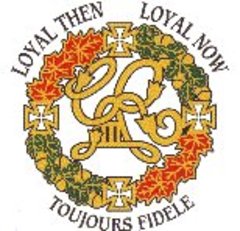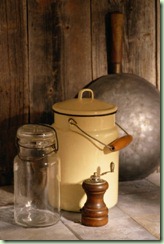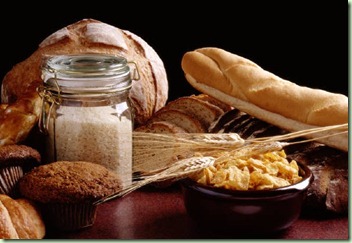You can tell by the recipes our ancestors used, that they had to make do with the most basic ingredients, they didn’t have a corner store to run to when they ran out of eggs, they had to wait until the chickens laid more. If they ran out of something they had to substitute the ingredient for what they had in their larder.
There wasn’t any fresh fruit in the wintertime, if you wanted fruit, you would have to preserve it by drying it, canning it or making it into jams and jellies. A "root cellar" was just that, it stored all of your root vegetables, onions, carrots, beets, turnips, parsnips, potatoes as well as the winter squash. Keeping it underground in a cool, dark place, the vegetables lasted for months.
They had smokehouse to preserve ham, bacon, sausages and fish. Beef would be dried into jerky to preserve it. Fresh meat was available by hunting wild game year round or raising livestock. They had their own milking cows for supplying the milk, cream, cheese and butter that they used daily.
Cooking and baking were done with the fireplace, hanging over it, for cast-iron pots or in the coals for roasting and baking. That must have been where the old cliche came from, “if you can’t take the heat, get out of the kitchen”.
Baking ingredients were a staple of every household, they had sourdough starter to make bread with and depended on it for their leavening ingredient. Sweeteners like molasses, honey, maple sugar and maple syrup were all that were readily available. There was no bleached flour, all of the flour was whole-grain wheat, buckwheat or corn meal. Herbs and spices were grown both for cooking and for their medicinal properties. Every home had an herb garden near the kitchen.
Here is a good example of “making do'”, from the book “Things Mother Used To Make” by Louise Maria Gurney in 1914:
=Fried Bread=
After frying pork or bacon, put into the fat slices of stale bread. As
it fries, pour over each slice a little milk or water and salt to
taste, turn and fry on the opposite side. This is a very appetizing
dish.
Now doesn’t that sound yummy? Makes you want to try it, just to see if it tastes as bad as you think it does. Here’s a few more:
=Delicious Dip Toast=
Cut slices of bread, one-half inch thick; toast each side to a delicate
brown. Dip these into hot, salted milk, letting them remain until soft.
Lay them on a platter and spread a little butter over each slice.Take one quart of milk more or less according to size of family; heat
in a double boiler, salt to taste. Wet two tablespoonfuls of flour with
a little water; stir until smooth, and pour into the milk when boiling.
Make this of the consistency of rich cream; add a piece of butter the
size of a walnut, and pour over the toasted bread. Serve hot.=German Toast=
1 Cupful of Milk
1 Egg
Pinch of Salt
4 or 5 Slices of BreadBeat together one egg, one cupful of milk, and a little salt. Dip
slices of stale bread into this mixture, and fry on a griddle in butter
or pork fat. Serve hot with butter and maple syrup.
Like French toast, but less eggs, more milk!
This one is my favourite “make do” recipe using bread:
=Crust Coffee=
Take the crusts, or any pieces of stale brown bread, and bake in the
oven until hard and brown. Put them into an agate or earthen tea-pot,
pour over them boiling water and boil ten or fifteen minutes. Strain
and serve hot like any coffee, with cream and sugar.
And to think I was just wasting all the stale bread by throwing it out!



